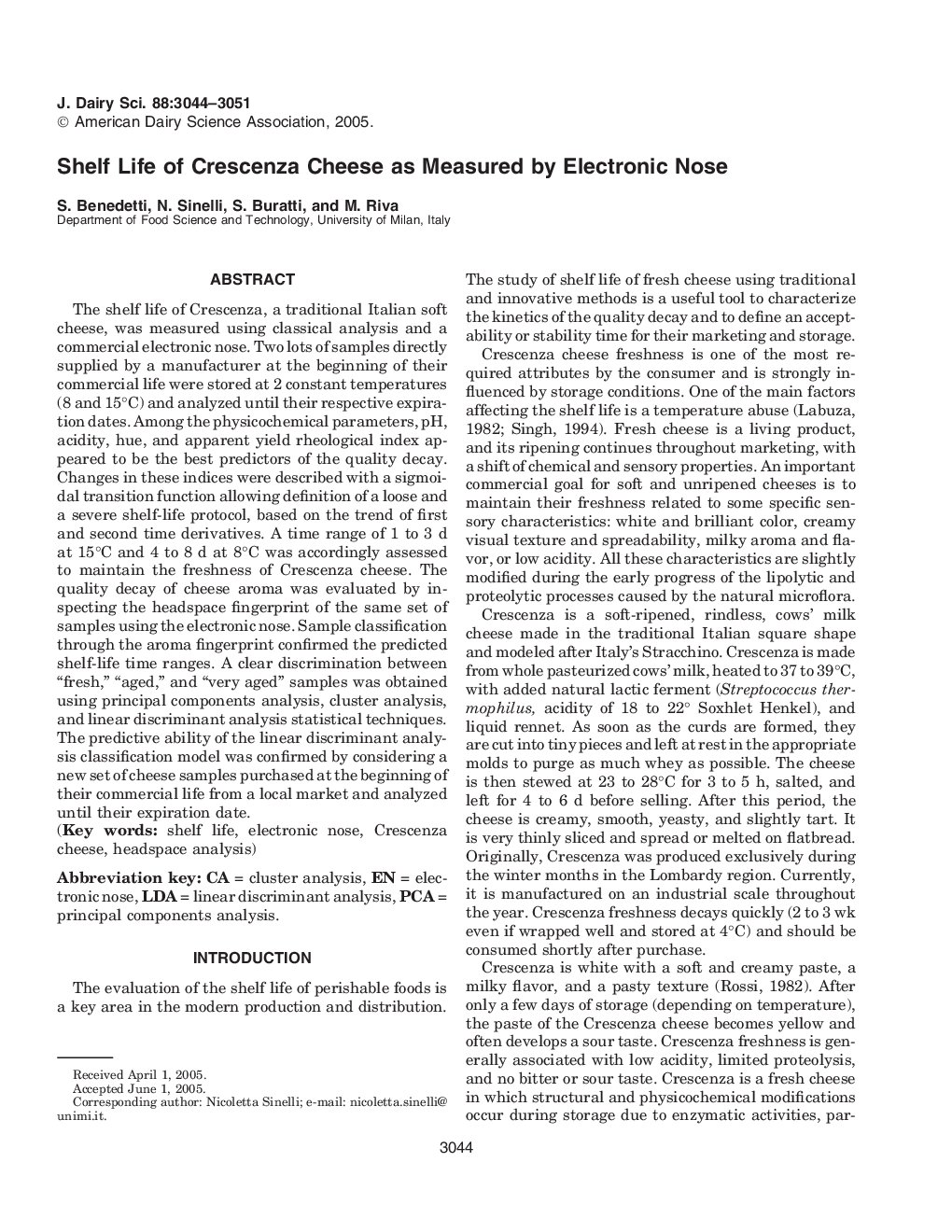| Article ID | Journal | Published Year | Pages | File Type |
|---|---|---|---|---|
| 2441403 | Journal of Dairy Science | 2005 | 8 Pages |
The shelf life of Crescenza, a traditional Italian soft cheese, was measured using classical analysis and a commercial electronic nose. Two lots of samples directly supplied by a manufacturer at the beginning of their commercial life were stored at 2 constant temperatures (8 and 15°C) and analyzed until their respective expiration dates. Among the physicochemical parameters, pH, acidity, hue, and apparent yield rheological index appeared to be the best predictors of the quality decay. Changes in these indices were described with a sigmoidal transition function allowing definition of a loose and a severe shelf-life protocol, based on the trend of first and second time derivatives. A time range of 1 to 3 d at 15°C and 4 to 8 d at 8°C was accordingly assessed to maintain the freshness of Crescenza cheese. The quality decay of cheese aroma was evaluated by inspecting the headspace fingerprint of the same set of samples using the electronic nose. Sample classification through the aroma fingerprint confirmed the predicted shelf-life time ranges. A clear discrimination between “fresh,” “aged,” and “very aged” samples was obtained using principal components analysis, cluster analysis, and linear discriminant analysis statistical techniques. The predictive ability of the linear discriminant analysis classification model was confirmed by considering a new set of cheese samples purchased at the beginning of their commercial life from a local market and analyzed until their expiration date.
